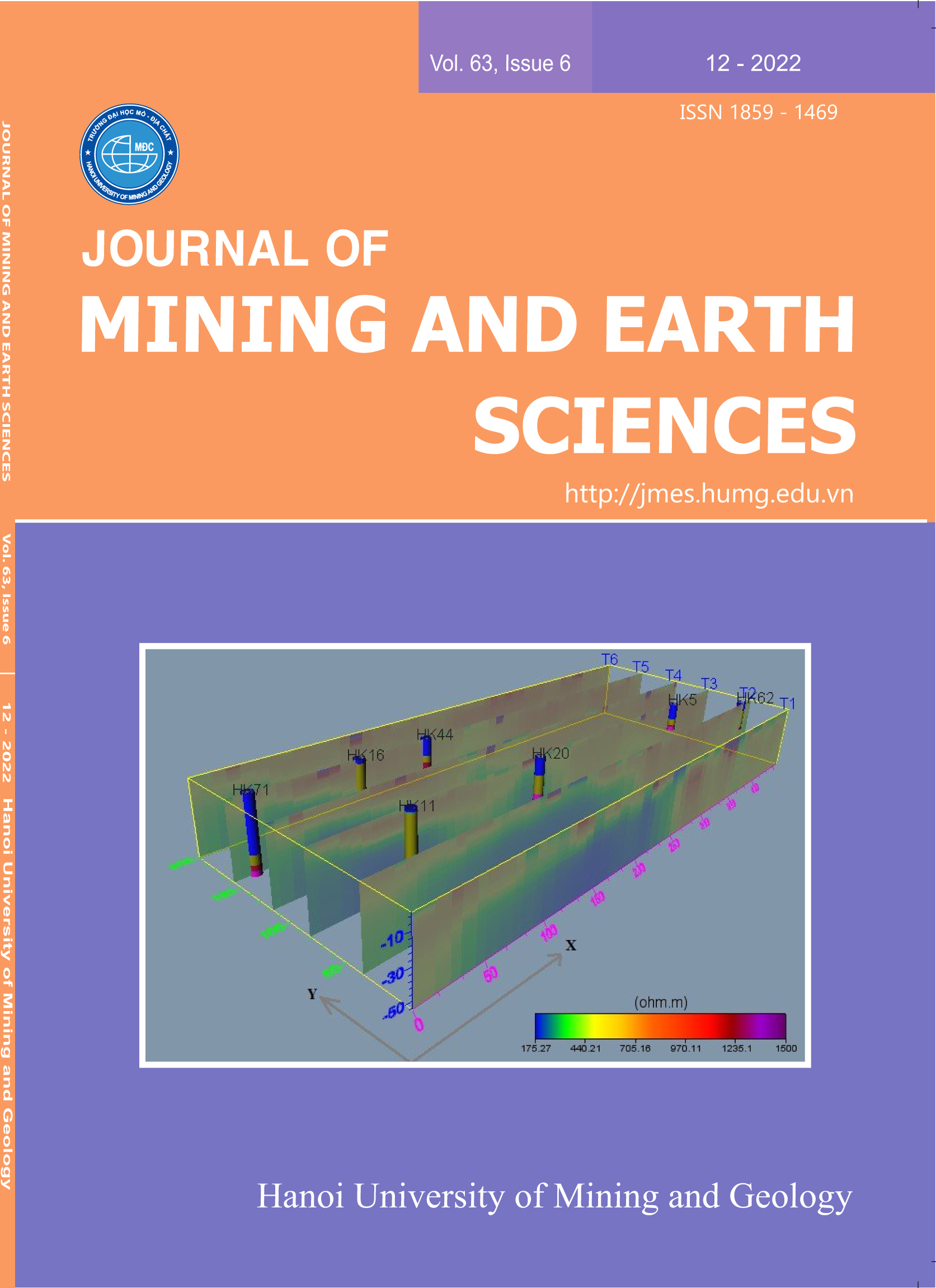Enhancing the performance of boundary footing of a renovated building using micropiles: Numerical and Site Visual Assessment
Tóm tắt
Reconstruction and building extensions have become popular trends, even being recognized as one of the most appropriate options for homes, especially in high population density areas or crowded cities. Due to the changes in the size of buildings (by applying additional loads), the existing foundations themselves are incapable of resisting extra stresses. Therefore, it is imperative to increase the bearing capacity as well as the overall stability of existing foundations. The paper aims to present a numerical case study on the use of micropile elements for enhancing the performance of the boundary footing of a renovated building in terms of bearing capacity and stability. Moreover, the effect of cohesionless soil types on the bearing capacity of boundary foundations was presented. Numerically calculated results show that the stability of the boundary footing, presented in terms of the safety factor, was increased as strengthened by micropiles. The bearing capacity ratio (BCR) of the boundary footing was significantly improved when the relative distance (S) between the micropile and the boundary footing decreased, and the length of micropiles (L) increased; however, the BCR rose as the micropile’s angle (() with respect to the vertical increase. In other words, the performance of the foundation underneath the boundary footing was significantly affected by some micropile parameters, including length, inclination, and the distance between the micropile and the boundary footing. These crucial factors must be carefully examined during the design of the micropiles’ configuration for strengthening the boundary footing. Lastly, the load-carrying capacity improvement of the loose sand using micropiles was found to be more significant than that of denser ones.Tài liệu tham khảo
Acharyya, R., & Dey, A. (2017). Finite element investigation of the bearing capacity of square footings resting on sloping ground. INAE Lett., 2, 97-105.
Al-Aghbari, M.Y., & Dutta, R.K. (2008). Performance of square footing with structural skirt resting on sand. Geomech. Geoengin. Int. J., 3, 271-277.
Al-Aghbari, M.Y., & Mohamedzein, Y. A. (2004). Model testing of strip footings with structural skirts. Proc. Inst. Civ. Eng.-Ground Improv., 8, 171-177.
Bhattacharjee, A., Mittal, S., Krishna, A. (2011). Bearing capacity improvement of square footing by micropiles. Int. J. Geotech. Eng., 5, 113-118.
Bruce, D.A., Dimillio, A.F., & Juran, I. (1997). Micropiles: the state of practice part 1: characteristics, definitions and classifications. Proc. Inst. Civ. Eng.-Ground Improv.,1, 25–35.
Esmaeili, M., Nik, M.G., Khayyer, F. (2013). Experimental and numerical study of micropiles to reinforce high railway embankments. Int. J. Geomech., 13, 729–744.
Hwang, T.H., Kim, K.H., & Shin, J.H. (2017). Effective installation of micropiles to enhance bearing capacity of micropiled raft. Soils Found., 57, 36-49.
Juran, I., Bruce, D.A., Dimillio, A., & Benslimane, A. (1999). Micropiles: the state of practice. Part II: design of single micropiles and groups and networks of micropiles. Proc. Inst. Civ. Eng.-Ground Improv., 3, 89-110.
Lee, T.-H., Chul, I.J., Kim, C. (2016). A Method for reinforcing the ground adjacent to the footing using micropiles. Mar. Georesources Geotechnol., 34, 341-355.
Liu, J., Xu, T., Wang, X. (2021). Seismic Behavior and Design of Concrete-Filled Thin-Walled Steel Tube Column-to-Foundation Connections. J. Struct. Eng., 147, 04021072.
Momeni, E., Nazir, R., Armaghani, D.J., & Sohaie, H. (2015). Bearing capacity of precast thin-walled foundation in sand. Proc. Inst. Civ. Eng.-Geotech. Eng., 168, 539-550.
Raj, D., Bharathi, M. (2013). Bearing capacity of shallow foundation on slope: a review, in: Proceedings of the 4th ICSMFE.
Report on soil investigation. (2019). No: 2019.ĐC.TKKT.10.Viet Delta Consultancy., JSC.
Shah, I.A., Zaid, M., Farooqi, M.A., & Ali, K. (2021). Numerical Study on Micropile Stabilized Foundation in Flyash. Indian Geotech. J., 51, 1099–1106.
Terzaghi, K., Peck, R.B., & Mesri, G. (1996). Soil mechanics in engineering practice. John Wiley & Sons.
Vietnam Ministry of Transport. (2016). Research on the application of micropiles for transportation structures in Vietnam. Institute of Transport Science and Technology.
Xiang, Y., Long, W., & Shi, H. (2015). Analysis on horizontal bearing capacity based on catastrophe theory of anti-slide micropiles, in: ISRM VietRock International Workshop. OnePetro.


